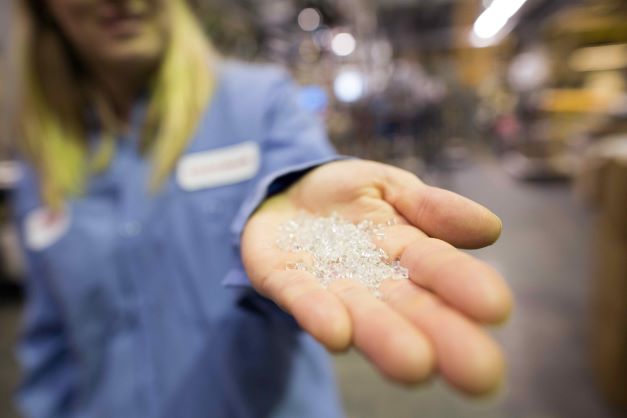
Eastman announced plans in January to invest up to US$1bn in a material-to-material molecular plastics recycling facility in France that is said to be the world’s largest. The company hopes the plant will accelerate the circular economy by tackling hard-to-recycle plastic waste that is currently being incinerated.
In an update, Eastman has signed a long-term supply agreement with Interzero Plastics Recycling for the facility, with the company providing up to 20,000 metric tonnes per year of hard-to-recycle PET household packaging waste that would otherwise be incinerated.
Interzero Plastics Recycling is an innovation leader in plastics recycling with the largest sorting capacity in Europe and years of experience. Headquartered in Germany, Interzero is a service provider of circular solutions in Europe and is strongly connected to its sister company ALBA Group Asia, both led by chairman and shareholder Dr. Axel Schweitzer.
Eastman’s planned molecular recycling facility in France is expected to become the world’s largest material-to-material molecular recycling plant. Once complete, the facility will recycle approximately 160,000 tonnes of hard-to-recycle polyester waste annually. The project is expected to be operational in 2025.
“Eastman is a leader in molecular recycling with decades of innovation expertise,” said Jacco de Haas, chief commercial officer at Interzero Plastics Recycling. “Joining forces by combining the leading know-how of Eastman and Interzero is the next step in closing the loop with our partners and a step closer toward a world without waste. The world is facing a plastic waste crisis with far too little plastic waste being recycled, either from lack of collection or because it simply cannot be recycled by traditional methods. Eastman’s innovative process and this agreement bring a solution to this.”
Chemical recycling is a necessary complement to mechanical recycling to keep more raw materials in the loop. Both companies are committed to creating material circularity. Eastman’s facility in France will process coloured and opaque PET waste that cannot be recycled mechanically to create clear and transparent rPET upon completion.

US Tariffs are shifting - will you react or anticipate?
Don’t let policy changes catch you off guard. Stay proactive with real-time data and expert analysis.
By GlobalData“Interzero and Eastman are committed to reducing plastic waste and creating circularity through collaboration and innovation,” added Brad Lich, Eastman executive vice president and chief commercial officer. “This agreement marks an important milestone toward Eastman’s investment in France. We are happy to build a strong collaboration in Europe with Interzero to provide a portion of the feedstock needed to successfully operate our facility. The collaboration reinforces the complementary nature of mechanical and molecular recycling, and the importance of working together to create true circularity.”
Eastman’s proven polyester renewal technology provides circularity for hard-to-recycle plastic waste that remains in a linear economy today. This material is typically incinerated because it either cannot be mechanically recycled or must be downcycled using existing technology. Eastman’s chemical recycling technology allows this hard-to-recycle waste to be broken down into its molecular building blocks and then reassembled to become first-quality material without any compromise in performance. Eastman’s polyester renewal technology enables the potentially infinite value of materials by keeping them in production, lifecycle after lifecycle. With the technology’s inherent efficiencies and the renewable energy sources available in France, materials can be produced with significantly less greenhouse gas emissions than traditional methods.



